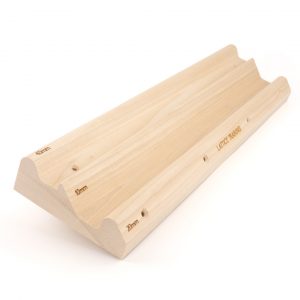Onsight Myths & Mistakes: How to onsight harder this year!
Onsighting is the jewel in the crown of ‘style points’.
It’s one of the hardest aspects of climbing to achieve mastery in; and an aspect where climbers so often make mistakes when trying to improve.
Know your goal demands
No onsight route looks exactly like the next. One may be 8 bolts long, climb a vertical crimpy face, and the other may be 20 bolts long and travel through complex tufa terrain. The physical, technical, tactical and mental demands of these are very different!
→ Preparation and performance must match the goal.
Physical demands
To gain the most from your training, match the following factors in your goal route:
- Duration – how long does it take to onsight?
- Intensity – how hard are the cruxes?
- Angle – what muscle groups (aside from forearms) are going to control performance?
- Hold type – are you on 8mm edges, pockets or even deep tufas?
Technique, tactics and mindset
Aside from the physical demands of your route, there are other factors that massively affect the outcome.
- Terrain – are you skilled at moving through this type of terrain?
- Tactics – visualisation, breathing and mid-route resting strategies are key.
- Mindset – are you scared when you onsight? Do you feel confident and familiar with at-limit onsighting?
The Pacing Myth
So many climbers think that their endurance or power endurance is the limiting factor in their onsight grade. For at least half of intermediate climbers, this is not true. One of the biggest issues is that climbers move too slowly.
- If you move slower, you will need to be physically stronger/fitter.
- If you move slower, you will have less onsight attempts that day.
- If you move too slow, you will move less efficiently.
The Endurance Myth
Endurance in the best onsight climbers is not developed through just one form of training intensity. Top onsight performance requires a broad approach.
- Very high volume, very low intensity endurance.
- Mid volume, mid intensity threshold endurance.
- Low volume, high intensity interval endurance.
All have their part to play!
The Redpoint Myth
Many of the world’s best onsight climbers are also the best redpointers – just look at Adam Ondra for example! However, the everyday climber may not know that the true reason why Adam onsights so well is that he has spent a lifetime actively practicing and refining this style.
- You are what you practice. The best onsighters will do a lot of it!
- Climb more with onsight climbers. You’ll learn faster.
- Redpointing does not have the same demands as onsight.
Read more training tips.
Follow Lattice Training on Instagram.
Follow Tom Randall on Instagram.






